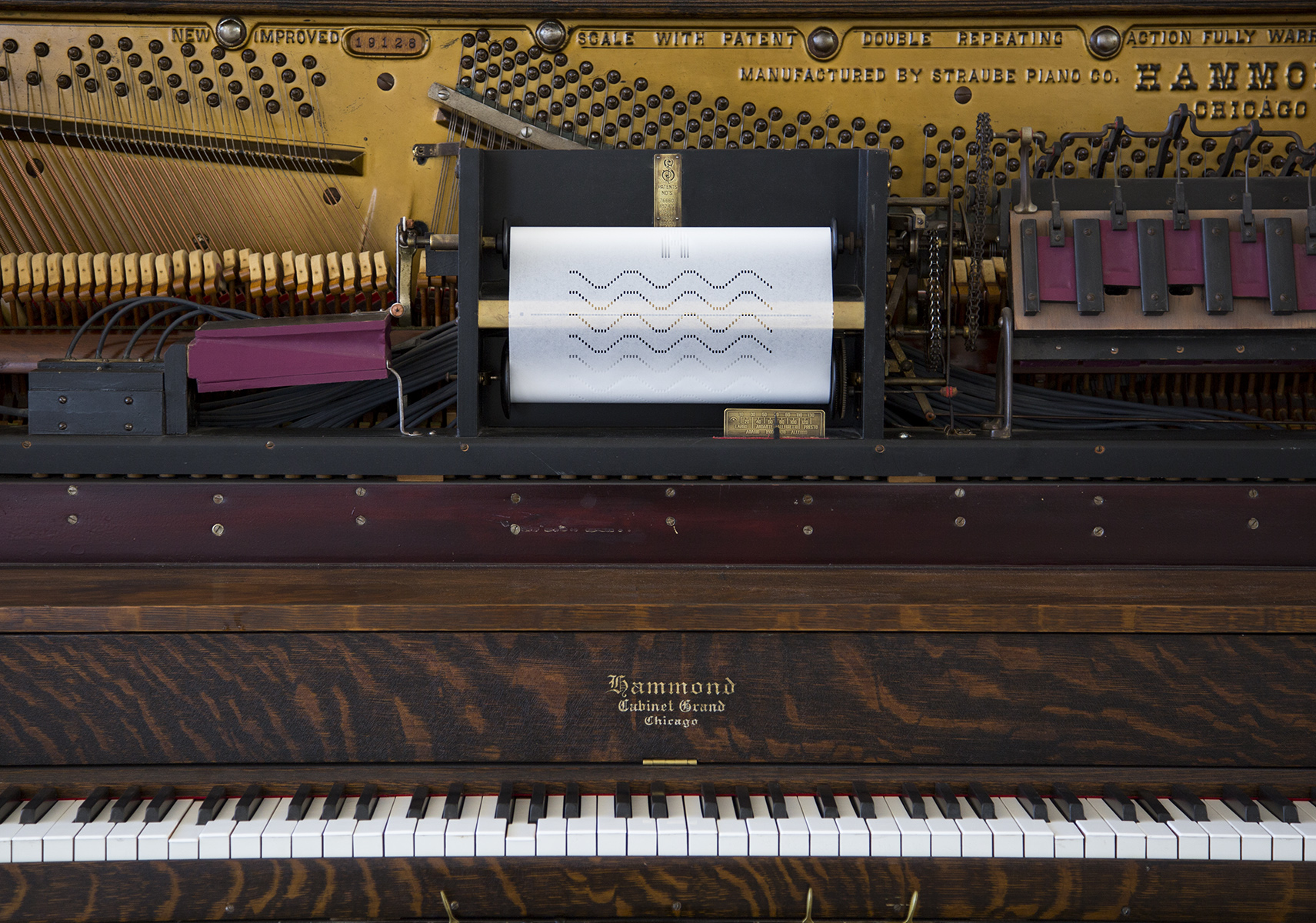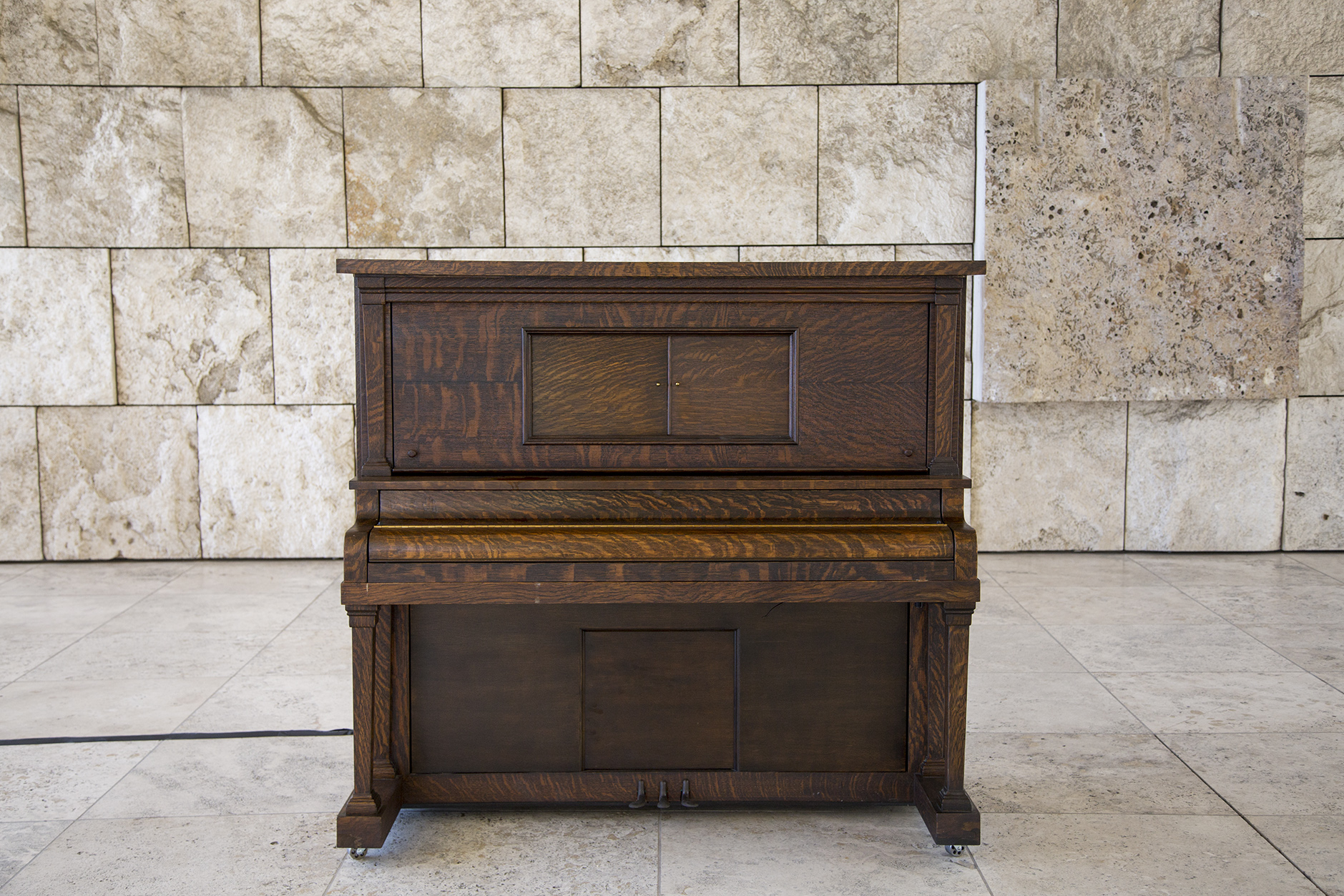New Music for the Player Piano
Held in conjunction with Paper Promises: Early American Photography
May 2018
Getty Museum
Photography—the mechanical box that is the camera, and the intricate image it renders—bears unexpected and fascinating relationships to another technology that emerged in the mid-19th century: the player piano. While one object concerns vision and the other sound, they both surpassed the abilities of the human hand. Just as few artist’s brushes rival a photographic presentation of reality, even the most virtuosic fingers lag behind the automated capacity of a player piano.
This debut of new compositions by contemporary experimental musicians for the player piano complements Paper Promises: Early American Photography, an exhibition that traces a period marked by experimentation with photography on paper. PIANO-GRAPHS brings together a group of musicians both connected and disconnected to the piano. Functioning as an early robot, the player piano reads data via a pneumatic device: air passing through the holes on the paper sheet inflates a bellows that triggers a key strike. In this sense, its mechanized programming links it to proto-electronic music. Some of the commisisoned musicians typically work with electronics, or translate their traditional instruments through them. Some are keyboard players, but others are composing on the instrument for the first time. Several of these musicians approached their compositions visually, generating sounds from specific shapes or symbols on the paper.
Contributing artists include electronic musicians and visual artists John Wiese and Celia Hollander, experimental percussionists Corey Fogel and Dean Spunt (of No Age), harpist Mary Lattimore, Nashville guitarist William Tyler, and musician and graphic designer Jeremiah Chiu.
The program's custom paper piano rolls are manufactured by Atlanta-based player-piano collector and enthusiast Timothy Baxter, owner of Meliora Music Rolls, who is among the very small number of people still manufacturing new player piano rolls in the world. His "perforator" makes rapid punches in paper rolls via a computer interface and circuit board. Specific columns of punches represent each playing note on the piano, as well as sustain pedal instructions. Baxter has created interpretations of a wide variety of classical, ragtime, and popular music for the player piano in an artistic setting. These include the realization of custom piano rolls of music composed by Ramin Djawadi for the first season of HBO's Westworld, Gershwin's centennial celebration at Carnegie Hall, and the feature film The Greatest Showman with Hugh Jackman. In addition to the artists' experimental creations, a selection of rolls from Baxter's inventory will also be played that evoke the era of westward expansion depicted in Paper Promises.
Translated into a visual poetry of dot-and-dash perforations, these new scores, punctured into paper rolls, push the almost-obsolete mechanical instrument to its limits. Presented in juxtaposition with the early photography in the exhibition, this program invites reflection on the cultural impact of 19th-century shifts in automation, reproduction, the commodification of the arts and entertainment, and the representation of time.


